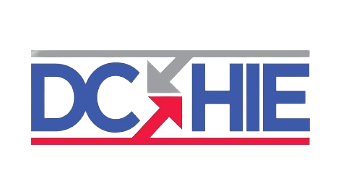In the District of Columbia, we’re developing a new approach to the very old problem of resource directory information management. Years ago we shared the story of the first phase of our work here on this blog, and we’re now excited to share results from our second phase.
The DC Community Resource Information Exchange initiative (DC CoRIE) is an initiative, funded by the DC Department of Health Care Finance (DHCF), to support person-centered care by connecting health and social services through DC Health Information Exchange (DC HIE) infrastructure. The CoRIE initiative is a partnership of DHCF, CRISP DC, the DC Hospital Association, and the DC Primary Care Association and its DC-PACT coalition. DC CoRIE facilitates exchange of information about resources and people, across diverse organizational contexts and technology systems, to promote equitable health outcomes.
One of DC CoRIE’s primary goals is the establishment of a publicly accessible and sustainable District-wide Community Resource Inventory (CRI) containing comprehensive and up-to date information about community resources and services. In 2019, we discussed this goal with a group of people who already maintain resource directories, and named the central challenges of this problem: first, that resource directory information requires significant effort to reliably maintain, and additionally, people want to use this data not just in one “centralized” system but across an ecosystem of distributed contexts and technologies.
In pursuit of this vision of a healthy information ecosystem, we resolved that year that our work should leverage the assets already in our community. (See the report from our participatory deliberation process here). Together, we identified three objectives for our 2020/21 phase:
- Develop a collaborative network of data stewards who will support this system by sharing data management responsibilities.
- Prototype a resource directory information system that is designed for interoperability – such that the contents of the CRI could be accessed by any third party system.
- Demonstrate the potential for this system to serve as a reliable source of open data about local services.
We’re proud to say that in 2021 we accomplished each of these objectives. Below, we’ll provide more context for how we completed work on these accomplishments – a link to our full report out on this work can be found at the end of this post.
1) Developing a collaborative network of resource directory data stewards
All of this work since 2019 has been informed by dialogue with a set of primary stakeholders: people who actively maintain resource directories in DC and the surrounding region, who best understand the problems and associated needs of the people they serve. In this phase, our first step was to form an “Action Team” consisting of such resource directory maintainers; they then set our priorities and parameters for success.
Once formed, this Action Team first sought to reach agreement as to what counts as useful and reliable when it comes to resource directory information. Together we reviewed Open Referral’s Human Service Data Specifications, as well as the resource directory style guide from the Alliance of Information and Referral Systems – and used these documents to develop localized policies with which each partner could agree. The resulting DC CRI Style Guide establishes a set of conventions and processes for producing resource directory data that can remain consistent and reliable even when it’s produced through partnership among multiple parties and used through data sharing across multiple information systems.
Then we took action: using this style guide, and building upon the prototype of a resource directory information system developed in Phase 1 by Sarapis, we tested new methods of collecting and sharing resource directory information.
2) Prototyping a shared resource registry system
Our first test was the development of a Program Register with information about all the services provided by organizations that are members of the DC-PACT coalition. DC-PACT consists of community-based organizations, healthcare providers, and government agencies – only 80 organizations in total, but these 80 entities provide almost 500 services among them, including many of the most commonly-requested services in the city. This is only a piece of the proverbial pie, but it’s a big piece.
Notably, every organization in DC-PACT had agreed to share service information with each other (one of the conditions of membership in this coalition); however, when we requested that each submit information to the register over the course of a month, only two-thirds responded, and only one-third completed the process. This affirmed our CRI Action Team’s stated assumption that resource directory information maintenance cannot be “automated” simply by asking organizations to update their own information.
So even while asking organizations to contribute, we established the DC-PACT program register in the old-fashioned way: a designated resource directory manager reviewed each organization’s program information to ensure it was accurate and in accordance with our style guide, sometimes contacting the organization multiple times for verification. We learned through this process that it’s possible to maintain reliable program information and make it available as canonical open data – as long as a human is designated and appropriately resourced to monitor and verify it.
Next, we tested integration of this DC CRI infrastructure with CRISP. As the regional healthcare information exchange, CRISP is used by most of the city’s healthcare institutions for coordinating clinical care. Through DC CoRIE, they’re expanding their offerings to support information exchange among social services. By integrating the DC CRI into CRISP’s infrastructure, the same information available on our demonstration website can also be made available within CRISP’s care coordination tools.
Finally, we worked with the DC CRI Action Team members to explore the potential for each of them to mutually benefit from this system – by contributing data about services within their domain, while receiving access to data about services beyond their domain. To this end, we’ve conducted initial resource data exchanges with CRI Action team members, and compared the contents of each respective system to identify the most appropriate boundaries around which responsibilities for collection, maintenance, and curation can be divided up.
We’re now developing a partnership framework in which a designated organization would support this collaborative network by synthesizing their contributions into quality-assured resource data as a service (i.e. a ‘data utility’).
In other words, we have all the technology we need – at least to get started. Now we have to develop the institutional context in which the promise of that technology can be realized. In developing our framework for governance and sustainability, we are supported by the Robert Wood Johnson Foundation’s Learning and Action in Policy and Partnerships program (LAPP). Through this program, we’ve launched the next phase of the DC CRI’s development – the Sustainable Community Resource Inventory Partnership (SCRIP) – through which we will develop a policy framework and a sustainable operating model to steward this shared infrastructure on the path ahead.
3) Demonstrating the potential of open data, interoperability, and community stewardship
Over the last year, the CoRIE initiative has successfully implemented a prototype of a District-wide collaborative resource data management system that has integrated a range of already-existing resource directory databases and established capacity for stewardship and governance moving forward. Today, the DC CRI prototype can be accessed on the web, through the DC HIE, or via API. The District is also convening stakeholders through the DC HIE Policy Board to develop standards related to the use, exchange, sustainability, and governance of CRI data. As DC CoRIE evolves – enhancing capacities to support screening for social needs and referrals to appropriate services across many technology platforms – we welcome new engagement from interested stakeholders! Reach out to learn more here.
Check out our final report for this phase here.
And stay tuned for more updates!


Leave a Reply